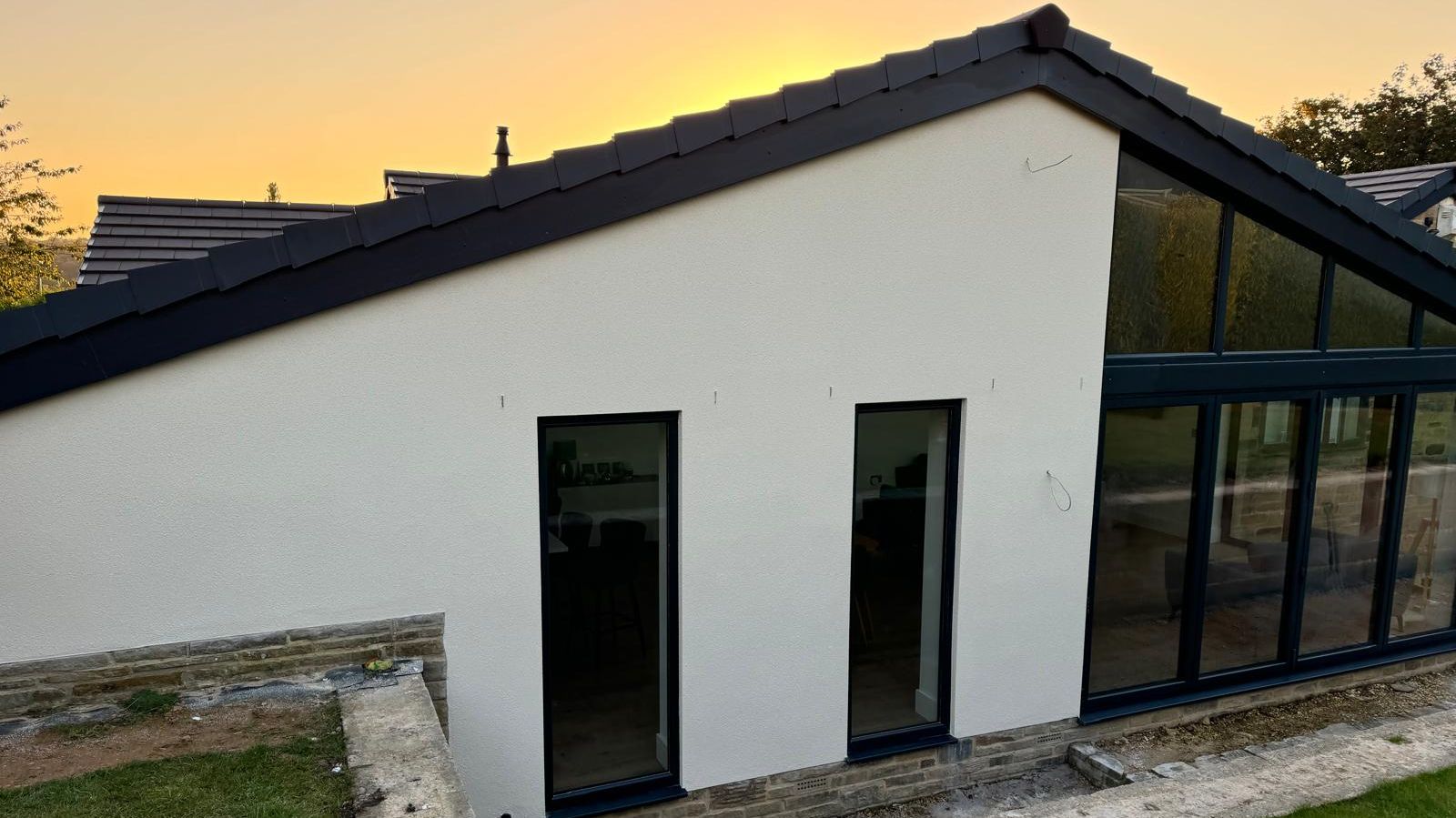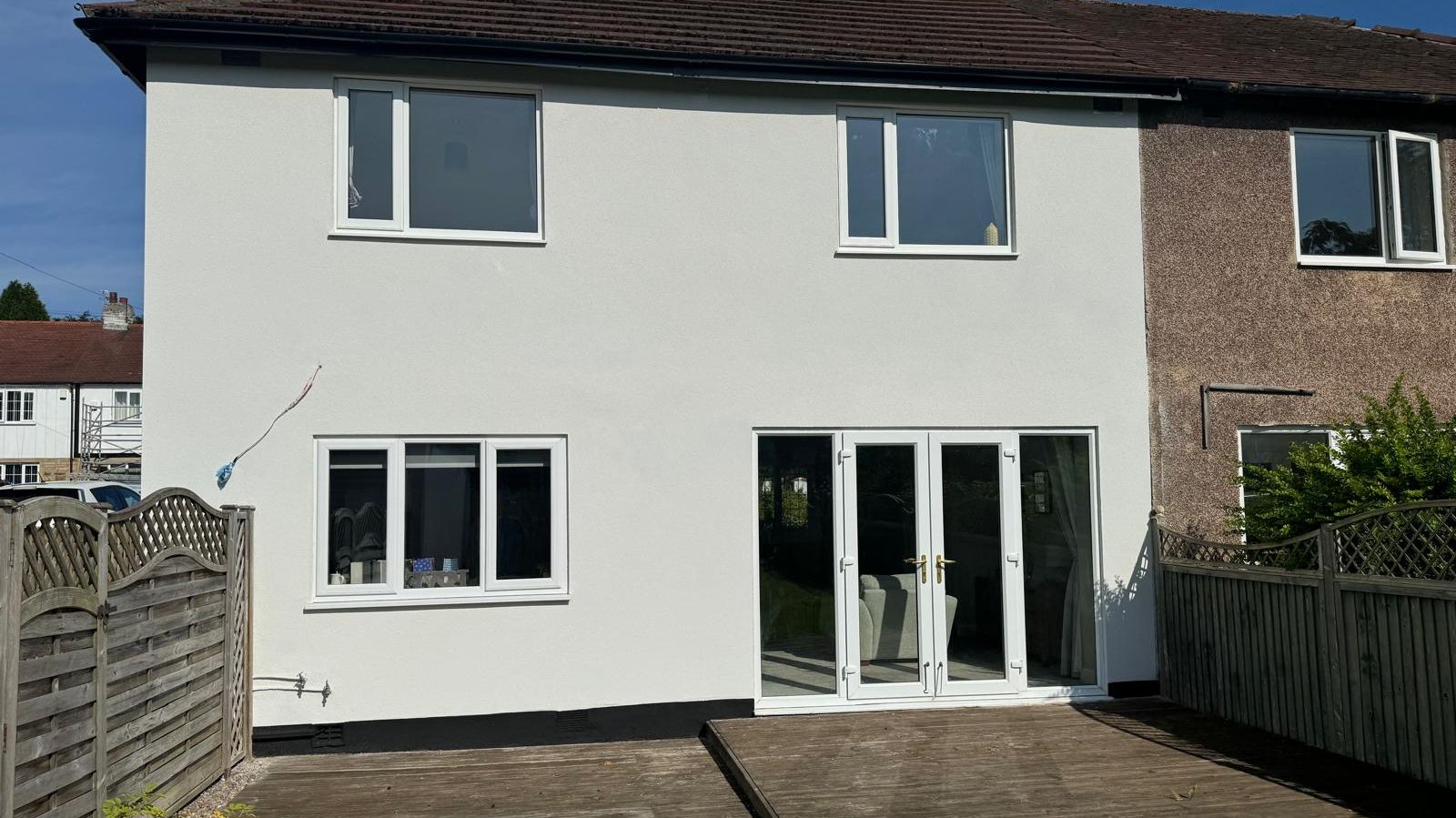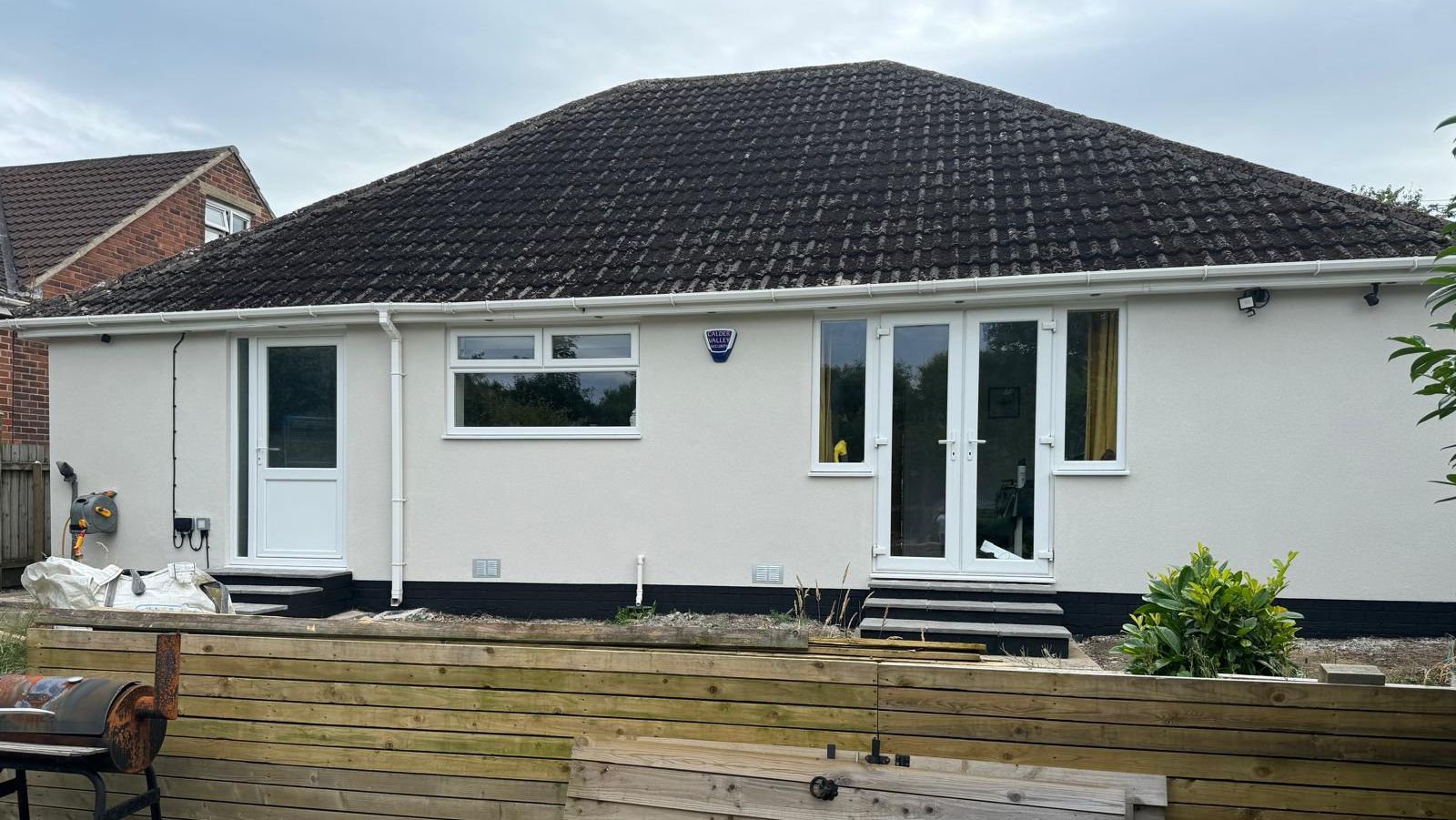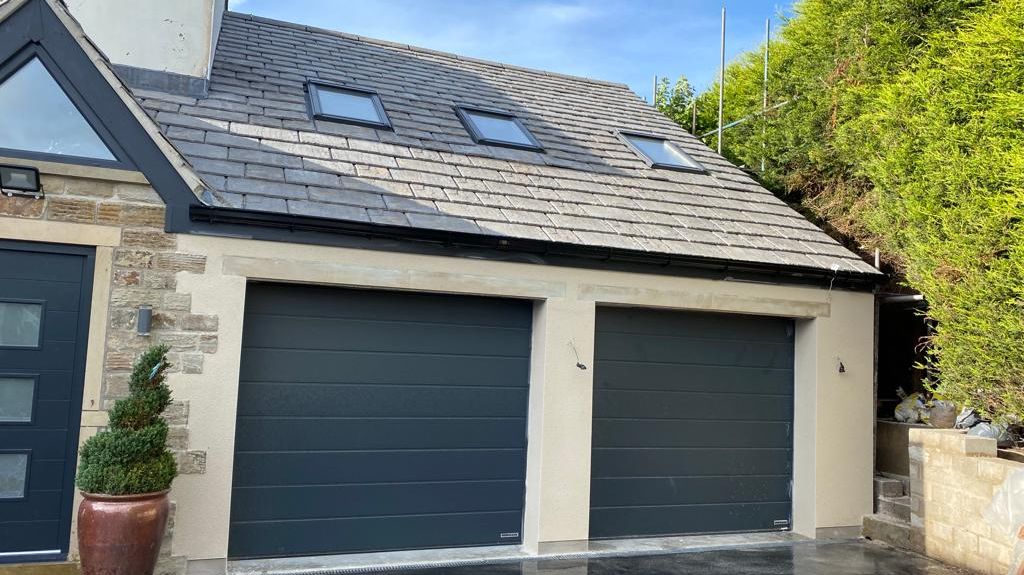Types of Rendering for Houses
Published: 18/08/2025 11:00 by Spray Render Services
Complete Guide to Render Materials, Finishes and Techniques
Choosing the right render type for your home is an important decision, it affects how your property looks, how well it withstands the weather and even how much maintenance it will need in the years ahead. With so many types of external render available, from traditional lime and cement mixes to modern silicone and polymer systems, it’s essential to understand the strengths and limitations of each one.
As a business who has worked in rendering for many years, we've seen first-hand how the right choice can protect and transform a property for decades. We've also seen the other side of the coin and how the wrong choice can lead to costly repairs.
This guide on wall rendering types is written to help homeowners navigate the options, explaining both the different types of render and the various external render finishes on offer, so you can make an informed decision based on your home’s age, location and your ideal style.
Contents:
What is Rendering?
Types Of Rendering Materials
Types of Render Finishes
Types of Rendering Techniques
Choosing the Best Type of Render for a House
At-a-Glance Table to Render Types and Finishes
Summary and Key Takeaways
FAQs

What is Rendering?
Rendering is the process of applying a protective and decorative coating to the exterior walls of a building. This coating can be made from a variety of different types of render materials, each with its own performance characteristics. They're designed to protect the underlying structure of your home from weather damage while also improving the property’s appearance.
A well-applied render offers a barrier against rain, wind and frost, helping to prevent water ingress and the deterioration of brick or stonework. With some external render types, it can also improve a home’s thermal performance by reducing heat loss, particularly when combined with external wall insulation.
The finish of the render, whether smooth, textured or patterned, also plays a significant role in the building’s visual style, influencing everything from curb appeal to how well the surface hides imperfections.
In short, external home rendering offers three main purposes:
Protection: Shielding walls from the elements and reducing weather-related wear.
Appearance: Enhancing or transforming the visual style of a property.
Performance: Improving breathability, flexibility, or insulation depending on the chosen system.
For homeowners, understanding the different render types and render finish types is key to choosing a system that will work with, rather than against, the building’s construction and environment. Let's go over those next.
Types Of Rendering Materials
When it comes to the different types of house rendering, there is no single “best” type render for every property. The right material choice depends on the building’s age, the type of wall construction, the local climate and the homeowner’s preferences for appearance and maintenance.
Below are the main types of render used in UK residential projects, along with their benefits, limitations and typical applications.
Cement Render
Cement render is a traditional mix of cement, sand and sometimes lime. It's widely used for its strength, affordability and suitability for most modern homes. It offers a classic, solid appearance that can be finished smooth for a clean look or textured for added character.
Advantages: Cost-effective, durable and adaptable to smooth or textured finishes.
Considerations: Can crack over time if the substrate moves or if preparation is poor. Requires periodic repainting to maintain appearance and weather protection.
Best suited for: Modern brick or block properties where budget is a priority.
Lime Render
Lime render is the traditional choice for older buildings, especially those with solid walls. Its breathability allows moisture to evaporate from the wall, reducing the risk of trapped damp. Its softer, more natural finish suits period properties, complementing stone and brickwork without looking overly modern.
Advantages: Highly flexible, breathable and sympathetic to heritage properties.
Considerations: More expensive than cement render, longer curing times, requires skilled application.
Best suited for: Period homes, listed buildings and stone cottages built before the 1930s.
Acrylic Render
Acrylic render contains synthetic resins that increase flexibility and reduce the risk of cracking. It's available in a wide range of colours and does not require painting. It delivers a bright, consistent appearance and can be finished smooth for a sleek, modern look, or given a light texture to help disguise minor surface imperfections.
Advantages: Crack-resistant, vibrant colour options, weatherproof.
Considerations: Limited breathability makes it unsuitable for older solid-wall properties.
Best suited for: New builds and decorative facades requiring bold coloured finishes.
Silicone Render
Silicone render is a premium choice, valued for its water-repellent and self-cleaning properties. Rainwater naturally washes dirt from the surface, keeping the finish looking fresh. It maintains a vibrant look for years, with colours that resist fading and surfaces that naturally shed dirt. It can be finished smooth for a contemporary style or with a fine, scraped texture for added durability and easier maintenance.
Advantages: Low maintenance, excellent weather/water resistance, long lifespan, flexible.
Considerations: Higher upfront cost, colour matching can be difficult for repairs.
Best suited for: Exposed locations such as coastal or roadside properties or homeowners seeking minimal upkeep.
Monocouche Render
“Monocouche” means “single layer” in French. This through-coloured render is applied in one coat, saving time compared to multi-layer systems and gives a consistent tone across the entire surface, creating a uniform, modern appearance without the need for paint. It can be finished smooth for a sharp, contemporary look or with a scraped texture that helps mask minor imperfections while adding subtle depth.
Advantages: Faster installation, no painting required, consistent colour throughout.
Considerations: Slightly less flexible than silicone render; limited colour range.
Best suited for: New builds and time-sensitive projects where labour costs need to be reduced.
Polymer Render
Polymer render is quite similar to acrylic but is enhanced with resin for improved adhesion, flexibility and weather resistance. It's favoured for properties where standard acrylic might struggle such as older homes with minor movement, surfaces that require extra bonding strength or buildings in exposed locations. It can be finished smooth for a clean, modern style or with decorative textures that add depth and visual interest.
Advantages: Sticks well to various substrates, good crack resistance, weatherproof.
Considerations: Less breathable than lime-based systems, higher material cost.
Best suited for: Mixed-material walls, problem surfaces and retrofit projects.
Insulated Render Systems (EWI)
Along with these rendering types, it's also worth adding external wall insulation (EWI) systems to this list. These insulation systems combine insulation boards fixed to the exterior of your property with an additional rendered finish over the top.
They're ideal for older solid-wall, exposed properties or any project where upgrading insulation and appearance together makes sense. It’s particularly valuable during major refurbishments or when external home rendering is desired without sacrificing internal space.
Advantages: Significant improvement to thermal performance, reduced energy bills, modernised appearance.
Considerations: High installation cost, requires experienced installers.
Best suited for: Energy-efficiency upgrades, cold homes and complete exterior refurbishments.
Expert Insight:
"Selecting the correct type of render material is the foundation for any successful rendering project. Homeowners should discuss with us matching the performance characteristics, breathability, flexibility, insulation and maintenance requirements to their property’s specific needs before moving on to choosing the render finish type."
Ian Jagger - Spray Render Services

Types of Render Finishes
Once the right render material has been chosen, the next decision is the type of render finish. The external render finish type you choose defines not only the appearance of the property but also how well the surface hides imperfections, resists weathering and suits the surrounding style of your area.
A skilled renderer can achieve many different types of render finishes, textures and patterns, each offering its own balance of durability, maintenance and aesthetics. Below are the most common render finish types used on UK homes, along with their typical applications:
Smooth Finish
A smooth render finish creates a sleek, flat surface that gives a clean, modern look. Applied carefully over a prepared substrate using a trowel and float, it highlights the architectural lines of a property and works particularly well with through-coloured renders such as silicone or monocouche. This finish is best suited to properties where precision and a minimalist aesthetic are desired.
Advantages: Crisp, contemporary appearance. Shows off architectural lines. Compatible with through-coloured renders (silicone & monocouche).
Considerations: Highlights any imperfections in the underlying wall. Requires high-quality preparation. May need occasional maintenance depending on render type.
Best suited for: Modern new builds, extensions and urban properties seeking a clean, minimalist facade.
Scraped Finish
Scraped render is created by applying a thick coat of render and then lightly scraping back the surface to achieve a subtle, uniform texture. The resulting finish adds depth, disguises minor wall imperfections and offers a more forgiving surface than smooth render. It's a versatile choice for both traditional and contemporary properties.
Advantages: Conceals small defects. Low-maintenance appearance Adaptable to different render types.
Considerations: Requires careful application to maintain uniformity. Texture may collect some dirt over time.
Best suited for: Homes in residential areas, period properties requiring a more forgiving finish and properties where minor imperfections are present.
Textured Finish
Textured render is achieved by using specialist tools, sponges or rollers to create patterns on the surface. These can range from fine grains to pronounced swirls or stipples, providing a distinctive appearance and adding character to the property. Textured finishes are effective at masking wall imperfections while giving the home visual interest.
Advantages: Adds depth and individuality. Conceals surface flaws. Durable when applied correctly.
Considerations: Requires patience and skill to achieve a consistent pattern. May collect more dirt than smoother finishes.
Best suited for: Period properties, feature walls or homes where a decorative, characterful facade is desired.
Pebble Dash (Dry Dash)
Pebble dash is created by throwing small decorative stones onto the final coat of render while it is still wet. This produces a robust, highly durable finish that is resistant to weathering, impact and everyday wear. It has a traditional appearance often associated with mid-20th-century homes.
Advantages: Extremely durable. Low-maintenance. Excellent weather and impact resistance.
Considerations: Can look dated on modern homes. Colour choice is limited. Removal or replacement is difficult.
Best suited for: Coastal or exposed properties, traditional residential homes and homeowners seeking a tough, low-maintenance finish.
Tyrolean Finish
Tyrolean render is applied using a spraying machine that produces a uniform, fine splatter texture. Layers can be built up to create a thicker, more weather-resistant coating. It's effective at covering uneven walls and is often used in renovations or on older properties.
Advantages: Uniform, durable texture. Effective on imperfect substrates. Weather-resistant.
Considerations: Requires specialist equipment and experienced installers. Limited decorative variation.
Best suited for: Renovations, older homes and properties with slightly uneven walls requiring a consistent, protective finish.
Roughcast
Roughcast render is similar to pebble dash but with the aggregate mixed directly into the render before application. This produces a rustic, integrated texture that is highly weatherproof and visually distinct. Roughcast adds character while providing excellent long-term protection.
Advantages: Strong, weather-resistant finish. Rustic aesthetic. Integrated aggregate reduces maintenance.
Considerations: Heavier than other finishes. Style may not suit all modern homes. Repair work can be more complex.
Best suited for: Traditional cottages, rural homes and properties in areas exposed to heavy rainfall or frost.
Expert Insight:
"Choosing the right type of cement render finish is just as important as choosing the right material. A good tradesman will consider the age of the property, the surrounding environment, and how much maintenance the homeowner is prepared to do before recommending a finish."
Ian Jagger - Spray Render Services

Choosing the Best Type of Render for a House
Selecting the right render type for a property involves more than choosing a colour or finish. The material, application method and finish must all suit the property’s construction, age and location to ensure long-term durability and performance.
Our experienced tradesmen recommend considering the following factors and discussing them with us before making a final decision:
Property Age and Wall Type: Older solid-wall homes often benefit from more traditional breathable renders like lime, which allow moisture to escape and reduce the risk of any damp. Modern brick or block properties can typically use acrylic, polymer or types of cement render finishes.
Exposure and Climate: Coastal or high-altitude properties may require more weather-resistant systems, such as silicone render or external wall insulation (EWI) to withstand wind, rain and frost.
Maintenance Requirements: Some render types, such as smooth cement finishes, require periodic painting or sealing, while silicone or monocouche renders are low-maintenance and retain their colour for many years.
Aesthetic Goals: The desired appearance of the property should guide both the render type and finish. Smooth, contemporary finishes suit modern builds, while textured or rustic finishes complement period homes.
Budget: Costs vary depending on material, finish and labour. Cement renders are the most economical, while silicone renders and EWI systems involve higher upfront costs but lower long-term maintenance allowing you to recoup the investment in your home.
At-a-Glance Table to Render Types and Finishes
With so many types of rendering and external render finishes available, it can be difficult for homeowners to quickly identify which option is best suited to their property. This table provides a clear, at-a-glance reference, summarising the most common render materials and finishes alongside their appearance, typical applications, and key considerations.
Render Type | Appearance & Finish Options | Best Suited For | Considerations |
Cement Render | Smooth or textured. Classic finish. | Modern brick or block homes. Budget-conscious projects. | Can crack if walls move. Requires periodic painting. |
Lime Render | Smooth or fine textured. Natural, soft finish. | Older solid-wall homes, listed buildings and period properties. | Longer curing time. Requires skilled application. Higher cost |
Acrylic Render | Smooth or lightly textured. Vibrant colour options. | New builds or decorative facades. | Limited breathability. Less suitable for older homes. |
Polymer Render | Smooth or textured. Flexible and durable. | Older homes with minor wall movement. Exposed locations. | Less breathable than lime. Higher material cost. |
Silicone Render | Smooth, fine or scraped texture. Long-lasting colour. | Coastal or exposed homes. Low-maintenance facades. | Higher upfront cost. Careful colour matching required. |
Monocouche Render | Smooth or scraped. Through-coloured | New builds, time-sensitive projects or modern homes. | Slightly less flexible than silicone. Limited colour range. |
Insulated Render Systems (EWI) | Smooth or textured. Over insulation. Modernised look. | Older solid-wall or exposed homes. Energy-efficiency upgrades. | High installation cost. Requires experienced installers. |
Smooth Finish | Sleek, flat, minimalist look. | Modern builds or urban properties. | Shows wall imperfections. Requires careful preparation. |
Scraped Finish | Subtle, uniform texture. | Residential homes or period properties with minor wall imperfections. | Texture may collect dirt over time. |
Textured Finish | Fine grains to pronounced swirls. | Feature walls. Period properties. | Requires skill for consistent pattern. Can collect dirt. |
Pebble Dash | Rough, stone-studded surface. | Coastal/exposed properties. Traditional residential homes. | Can look dated. Limited colours. Difficult to repair. |
Tyrolean Finish | Fine splatter, uniform texture. | Renovations, older homes or uneven walls. | Specialist equipment required. Limited decorative variation. |
Roughcast | Integrated aggregate. Rustic texture. | Rural or traditional cottages. Exposed areas. | Heavier than other finishes. Style not suited to all modern homes. |
By consulting this chart, homeowners can compare render types and finishes side by side, making it easier to match the right system to their home’s age, construction, location and desired aesthetic, helping to ensure a durable, attractive, and low-maintenance result.

Summary and Key Takeaways
Choosing the best type of external render for a home is about balancing protection, appearance, cost and maintenance. With a wide range of types of rendering, render materials and render finishes available, the ideal choice depends on the property’s age, wall construction, exposure and the homeowner’s desired aesthetic.
Key points to remember:
Materials Matter: Traditional options like cement and lime are proven and durable, while modern systems such as acrylic, polymer, silicone and monocouche offer flexibility, vibrant colours, and low-maintenance solutions. External wall insulation (EWI) systems combine performance with modern aesthetics, particularly for older or exposed properties.
Finish Impacts Appearance and Durability: Smooth finishes give a sleek, contemporary look while textured, scraped or rustic finishes add character and help conceal imperfections. High-exposure areas may benefit from robust finishes like pebble dash, roughcast or Tyrolean.
Consider the Property and Environment: Older, solid-wall homes often require breathable lime-based renders, while modern brick or block properties can use a wider variety of systems. Coastal, high-altitude or heavily exposed properties benefit from weather-resistant renders such as silicone or polymer.
Maintenance and Lifespan: Some renders, such as smooth cement or acrylic finishes, may require occasional repainting, while premium options like silicone or monocouche offer longer-lasting colour and minimal upkeep.
Professional Application is Key: Proper substrate preparation and skilled application like what you can expect from Spray Render Services are critical for durability and a high-quality finish. Even the best render can fail if applied incorrectly.
So there we have it, by understanding the different types of render and render finish types, homeowners can make informed decisions that enhance the property’s value, longevity and curb appeal of their beloved homes.
Consulting experienced tradesmen and using this guide ensures a rendering project that not only looks good but performs well for decades.
Ready to discuss your rendering project? Get in touch today with our team for a free quote.
FAQs
Q: What is the best render for exterior walls?
A: The best exterior render depends on the property’s construction and location. For most modern homes, silicone or polymer renders are highly durable, low-maintenance and weather-resistant. Older, solid-wall properties often perform better with lime-based renders, which allow walls to breathe while protecting against damp.
Q: What render doesn’t need painting?
A: Through-coloured renders, such as monocouche or silicone renders, are designed to retain their colour without the need for painting. These finishes reduce long-term maintenance while providing a vibrant, consistent appearance.
Q: What is the most popular render?
A: Cement render remains widely used thanks to its affordability and versatility. However, acrylic and silicone renders have become increasingly popular for new builds and refurbishments because of their durability, vast colour options and low maintenance.
Q: What is the new type of render?
A: Monocouche and modern silicone renders are among the newer family of rendering systems. They combine flexibility, vibrant through-colours and minimal maintenance, offering a contemporary alternative to traditional cement and lime renders.
Q: Which render lasts the longest?
A: Silicone renders and external wall insulation (EWI) systems generally offer the longest lifespan, often lasting 25 years or more with proper application and correct maintenance. Lime and cement renders are durable but may require repainting or repairs sooner.
Q: What is the best render to stop damp?
A: Breathable renders such as lime render are best for older homes prone to damp, as they allow moisture to evaporate from the wall. For modern properties, silicone or polymer renders provide excellent water resistance from the outside while maintaining flexibility.
Q: What time of year is best for rendering?
A: The ideal time is during dry, moderate weather, typically spring or summer. Avoid extreme heat, frost or heavy rain, as these conditions can affect curing and adhesion. Experienced tradesmen recommend temperatures between 5°C and 25°C for optimal, long lasting results.
Q: Which render doesn’t crack?
A: No render is completely crack-proof, but polymer and silicone renders are highly flexible and less prone to cracking compared to traditional cement or lime renders. Correct substrate preparation and professional application also greatly reduce the risk of cracks.
Q: What is the most waterproof render?
A: Silicone renders are considered the most waterproof, repelling rainwater while allowing walls to breathe slightly. Polymer renders are also highly water-resistant, making both suitable for exposed or coastal locations.